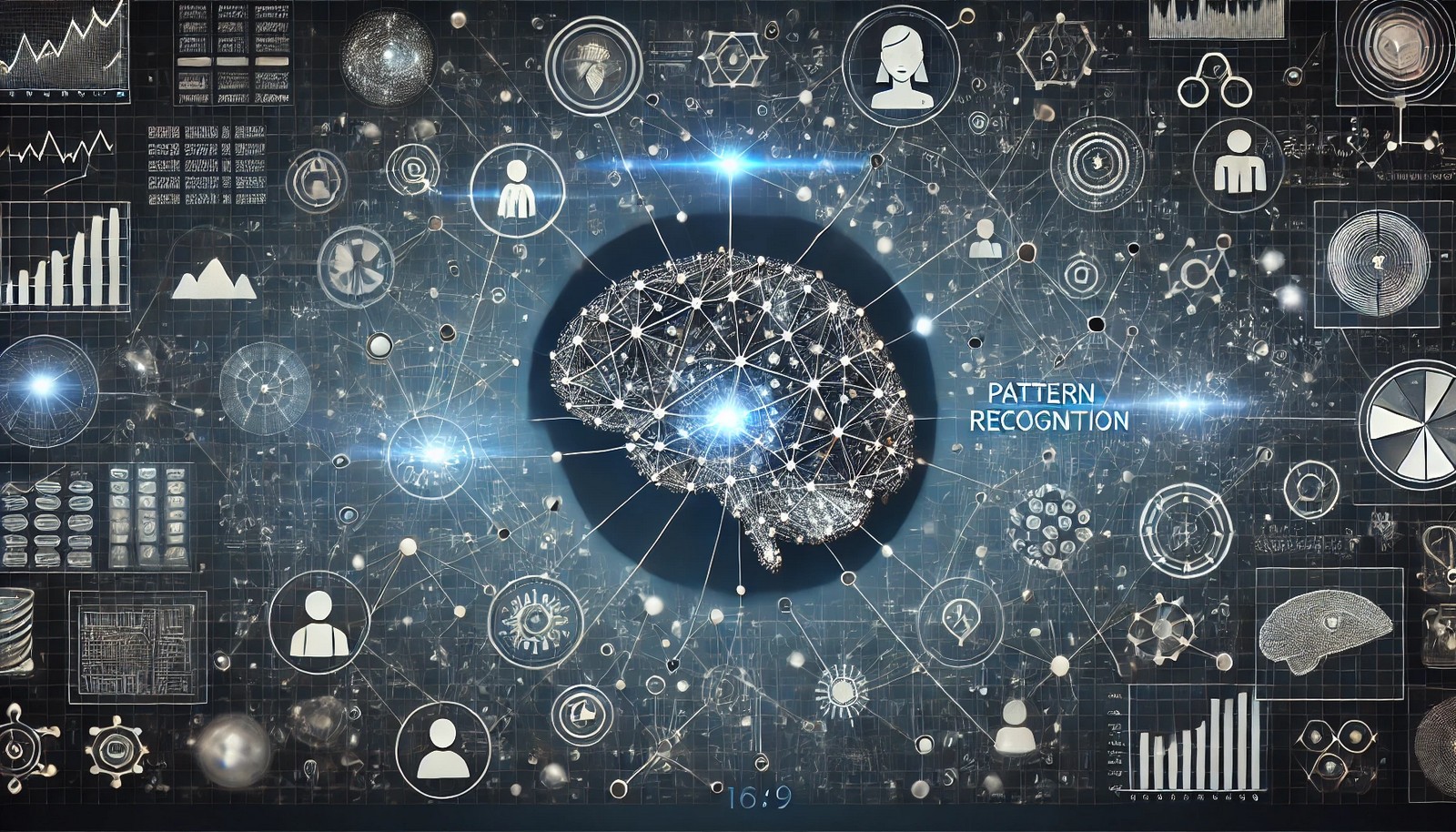Pattern Recognition

Quick Navigation:
- Pattern Recognition Definition
- Pattern Recognition Explained Easy
- Pattern Recognition Origin
- Pattern Recognition Etymology
- Pattern Recognition Usage Trends
- Pattern Recognition Usage
- Pattern Recognition Examples in Context
- Pattern Recognition FAQ
- Pattern Recognition Related Words
Pattern Recognition Definition
Pattern recognition is the process of identifying patterns and regularities in data, often using machine learning and statistical analysis techniques. It involves classifying input data into identifiable patterns, which can be based on either predefined classes (supervised learning) or learned automatically (unsupervised learning). This technique is widely used in fields such as image and speech recognition, medical diagnosis, and financial forecasting. Pattern recognition algorithms are designed to recognize specific data patterns by extracting features, comparing them to existing patterns, and categorizing them accordingly.
Pattern Recognition Explained Easy
Imagine you have a lot of jigsaw puzzle pieces. Each piece has a unique shape and color that helps you figure out where it belongs in the picture. Pattern recognition works like this—it's a way to help computers and people recognize familiar shapes or pieces and figure out where they fit. It’s like teaching a computer to see the difference between a cat and a dog by showing it lots of pictures and helping it understand the differences.
Pattern Recognition Origin
The origins of pattern recognition can be traced back to early developments in statistics and probability theory in the 20th century, which laid the foundation for machine learning. As computers advanced, the ability to analyze large amounts of data led to the emergence of pattern recognition as a formal field in artificial intelligence during the 1960s. It has since become integral to a wide range of applications, from medical imaging to robotics.
Pattern Recognition Etymology
"Pattern" comes from the Latin word "patronus," meaning "model" or "example," while "recognition" is derived from the Latin "recognitio," meaning "to know again." Together, the term indicates the process of identifying and classifying recognizable structures within data.
Pattern Recognition Usage Trends
Pattern recognition has seen a steady increase in usage, particularly with advancements in AI and machine learning. Its applications have expanded from traditional uses in data analysis to more complex applications like self-driving cars, facial recognition, and language processing. As data becomes increasingly abundant, pattern recognition will likely continue to be a critical tool in both consumer and industrial technologies.
Pattern Recognition Usage
- Formal/Technical Tagging: Machine Learning, Data Science, Classification, Predictive Analytics
- Typical Collocations: pattern recognition software, facial recognition pattern, speech pattern recognition, visual pattern recognition
Pattern Recognition Examples in Context
- "Pattern recognition is essential in medical imaging, where it helps identify potential tumors in radiology scans."
- "Voice-activated devices use pattern recognition to understand spoken commands, converting sound waves into recognizable instructions."
- "Researchers apply pattern recognition in ecological studies to track and predict animal migration patterns based on environmental data."
Pattern Recognition FAQ
- What is pattern recognition used for?
Pattern recognition is used to identify patterns in data for applications like facial recognition, speech processing, and medical diagnostics. - How does pattern recognition work?
It works by analyzing data, identifying unique features, and matching those features to known patterns. - Is pattern recognition a part of AI?
Yes, it’s a key component of AI, especially in machine learning for classifying data. - Can pattern recognition be done without AI?
Basic forms can be done manually, but AI greatly enhances the accuracy and speed of pattern recognition. - What’s the difference between pattern recognition and machine learning?
Pattern recognition is a subset of machine learning focused on identifying patterns, while machine learning encompasses broader learning capabilities. - Is pattern recognition used in everyday devices?
Yes, many devices, such as smartphones and voice assistants, use it to identify images, faces, and voices. - How is pattern recognition used in healthcare?
It’s used to analyze medical images, helping doctors detect diseases like cancer early. - What programming languages are best for pattern recognition?
Python, R, and MATLAB are popular languages for building pattern recognition algorithms. - Is pattern recognition the same as data mining?
Not exactly; data mining uncovers patterns in large data sets, while pattern recognition specifically identifies and classifies these patterns. - How is pattern recognition applied in finance?
It’s used to detect trends and predict stock movements based on historical data patterns.
Pattern Recognition Related Words
- Categories/Topics: Artificial Intelligence, Data Science, Machine Learning, Signal Processing
- Word Families: Recognize, Recognizable, Recognition, Patterned
Did you know?
In 2012, a breakthrough in pattern recognition occurred when deep learning algorithms surpassed traditional methods in image classification contests. This leap in performance helped establish deep learning as the dominant approach in pattern recognition, setting the stage for rapid advancements in AI applications like image and speech recognition.
PicDictionary.com is an online dictionary in pictures. If you have questions or suggestions, please reach out to us on WhatsApp or Twitter.Authors | Arjun Vishnu | @ArjunAndVishnu

I am Vishnu. I like AI, Linux, Single Board Computers, and Cloud Computing. I create the web & video content, and I also write for popular websites.
My younger brother, Arjun handles image & video editing. Together, we run a YouTube Channel that's focused on reviewing gadgets and explaining technology.



Comments powered by CComment